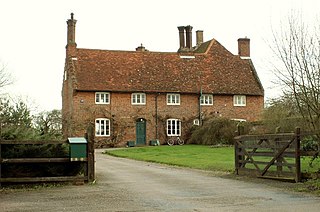
Neumünster Abbey is a public meeting place, cultural centre, and former Benedictine abbey located in the Grund district of Luxembourg City in southern Luxembourg.

The Schottenstift, formally called Benediktinerabtei unserer Lieben Frau zu den Schotten, is a Catholic monastery founded in Vienna in 1155 when Henry II of Austria brought Irish monks to Vienna. The monks did not come directly from Ireland, but came instead from Scots Monastery in Regensburg, Germany. Since 1625, the abbey has been a member of the Austrian Congregation, now within the Benedictine Confederation.
Åsebakken Priory, or the Priory of Our Lady of Åsebakken, is a Benedictine monastery of nuns at Birkerød, about 20 km north of Copenhagen in Denmark. The priory is part of the Beuronese Congregation within the Benedictine Confederation.
Gut Aich Priory is a Benedictine monastery in St. Gilgen in Austria.
The Austrian Congregation is a congregation of Benedictine monasteries situated in Austria, within the Benedictine Confederation.
Bezirk Hollabrunn is a district of the state of Lower Austria in Austria.
Bezirk Horn is a district of the state of Lower Austria in Austria.

Snelshall Priory was a Benedictine priory in Milton Keynes, Buckinghamshire in the United Kingdom, built around 1200. The priory was founded after Sybil d'Aungerville granted land at Tattenhoe to Lavendon Abbey, a Premonstratensian monastery of 'White canons' who most likely started a cell at Snelshall. This did not thrive and was abandoned about 1207. About 1219, the founder's son brought in Benedictine monks, increased the endowment and the new monastery began again. However Snelshall Priory paid 1 mark a year to Lavendon until 1232, at which point the Bishop of Lincoln decided that Snelshall owned its own lands and chapel. The priory accumulated various land through gifts, but even with all these grants, in 1321 when Henry Burghersh visited, it was so poor that "the monks scarcely had the necessities of life and had to beg even for these".

Durham Priory was a Benedictine priory associated with Durham Cathedral, in Durham in the north-east of England. Its head was the Prior of Durham. It was founded in 1083 as a Roman Catholic monastery, but after Dissolution of the Monasteries in 1540 the priory was dissolved and the cathedral was taken over by the Church of England.

Various monasteries and other religious houses have existed at various times during the Middle Ages in the city of Exeter, Devon, England.
Takeley Priory, dedicated to Saint Valery, was a Benedictine monastery in Takeley, Essex, England, founded by William the Conqueror between 1066 and 1086, that is to say, after the Conquest and before Domesday Book. The priory, with substantial landholdings in Essex and Middlesex, was given to the Abbey of Saint-Valery in Normandy, as a thank-offering for their assistance in facilitating William's crossing of the Channel in 1066 to invade England.
Brimpsfield Priory was a Benedictine monastic foundation in Brimpsfield, Gloucestershire, England, a cell or grange of the Abbey of Saint-Wandrille in Normandy. It was almost certainly founded between 1086 and 1100 by a member of the Giffard family, as lords of Brimpsfield, and was endowed with the demesne and advowson of the church.
Kilpeck Priory was a Benedictine priory in Kilpeck, Herefordshire, England, at grid reference SO448303.
Bromfield Priory was a priory in Shropshire, England, located at Bromfield near Ludlow.

Hoxne Priory was a Benedictine priory at Hoxne in Suffolk, England.

Rumburgh Priory was a Benedictine priory located in the village of Rumburgh in the English county of Suffolk. The priory was founded in about 1065 as a cell of St Benet's Abbey at Hulme in Norfolk. At the time of the Domesday Book in 1086 it had 12 monks. The ownership of the priory was transferred to St Mary's Abbey in York towards the end of the 12th century. The monks of Rumburgh were particularly devoted to St. Bee, whom they commemorated at Michaelmas.

Upavon Priory was a small priory in Wiltshire, England.

St. Paul's Church is a large Catholic church in the Ludwigsvorstadt-Isarvorstadt quarter of Munich, Bavaria, Germany. It was built in 1892–1906, designed by the Austrian architect Georg von Hauberrisser in the Gothic Revival style, north of the Theresienwiese.









